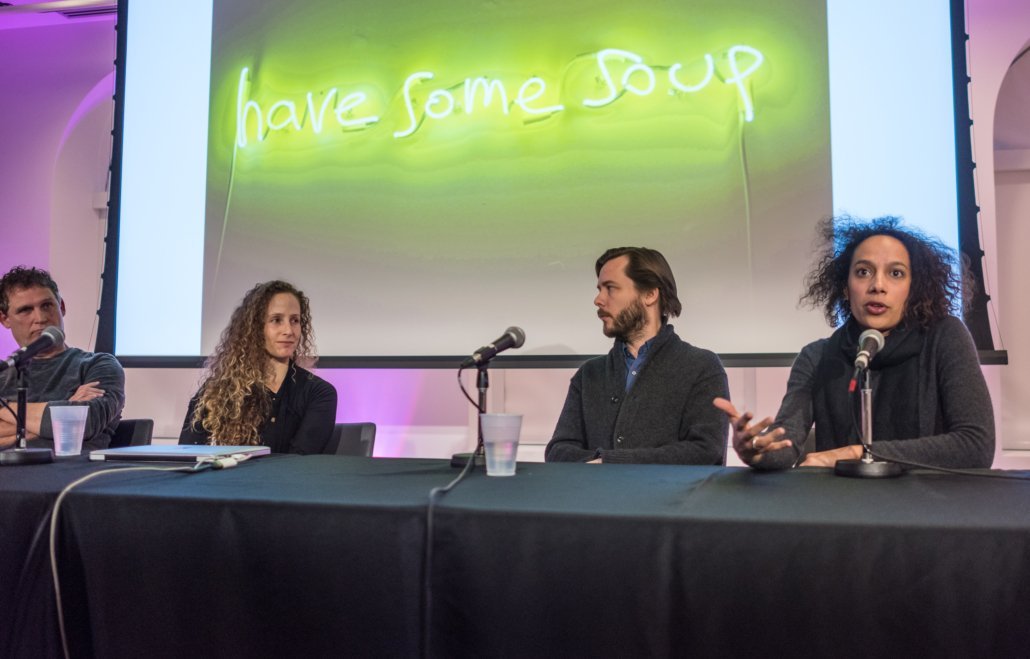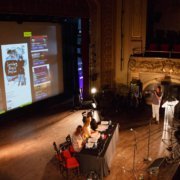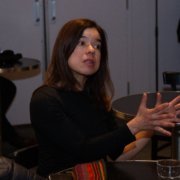ELAN History Series: 2016
A New Look: Connect, Support, Create
2016 was an exciting year for ELAN, with several multi-year projects underway and new branding for the organization. ELAN introduced a new logo that conveys movement, optimism, and rayonnement (radiance). The new tagline—Connect, Support, Create—draws out key drivers of ELAN’s activities. Through a survey and a public consultation with members, ELAN evaluated community needs for dissemination of information about networking, events, and projects. ELAN introduced a user-friendly website and an updated ELANews, and developed new webpages with clearly organized information about ELAN Membership benefits.
The year 2016 will be remembered as the year of policy consultations. It began with Quebec’s Ministry of Culture revisiting its Cultural Policy for the first time in 25 years. The cultural landscape has changed drastically due to the digital shift and issues of inclusion. An early April deadline for written briefs received very little publicity, but ELAN heard about it in time to consult with current and past board members from all disciplines and develop an initial submission. ELAN continued to consult with members and held a public consultation event in May. The final brief, covering concerns from all artistic disciplines, was submitted in August. ELAN made a presentation to the Ministry review panel, pointing out that English-language artists were disturbingly absent from the policy review working documents.
ELAN’s Executive Director Guy Rodgers subsequently met with Ministry staff who were charged with drafting the new policy, and with Minister Luc Fortin, reiterating the desire of English-speaking artists to see their contribution recognized and to receive an ongoing commitment to support their work.
Official Language advocacy is an important part of ELAN’s work, helping to shape policy, programs, and important partnerships. ELAN also played an active role in the review of Official Language policy, which occurs every five years, by consulting with the Quebec Community Groups Network (QCGN) and with francophone artists outside Quebec, and by attending the pan-Canadian policy forum in Ottawa.
In addition, in 2015 the City of Montreal began to update its 2005-15 Cultural Policy. The draft Cultural Policy 2017-22 was released in late 2016 for public review. ELAN held a public consultation with members in March 2017 to prepare a brief that was presented at City Hall in April.
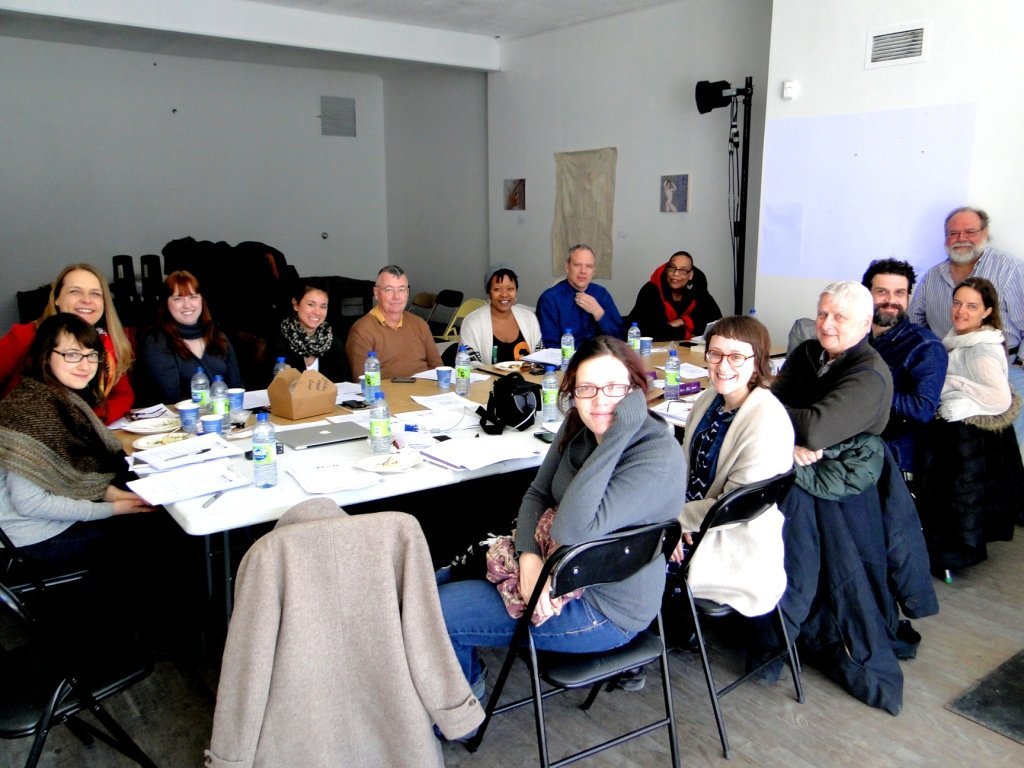
ELAN board – Planning Meeting. Back row, left to right: Amy Macdonald (staff), Bettina Forget (president) , Valerie Buddle (vice president), Karen Cho (secretary) , Fortner Anderson, Warona Setshwaelo, Rob Lutes, and Deborah Forde. Front row, left to right: Kristelle Holliday (treasurer), Erika Leblanc (staff), Keith Henderson, Paul Bracegirdle, Louise Campbell, and Chuck Childs.
Photo by: Guy Rodgers
Canadian Content in a Digital World
In April 2016, Minister of Canadian Heritage, Mélanie Joly, launched a public consultation process called Canadian Content in a Digital World (#DigiCanCon). The consultation examined the federal government’s current “cultural policy toolkit” for the “cultural content” sector in a globalized era, and reassessed all rules and regulations governing Canada’s $48-billion broadcasting, media and cultural industries.
The Canadian “cultural policy toolkit” consists of four tools: laws (e.g. the Broadcasting Act); institutions (e.g. CBC, NFB, Telefilm, CRTC); programs (e.g. Canada Media Fund), and policies (e.g. CRTC Canadian content rules for TV and radio). Canadians were encouraged to join the conversation and have their say on how to strengthen the creation, discovery and export of Canadian content in a digital world.
#DigiCanCon proposed three focus areas:
- Connect Creators and Consumers Through Quality Canadian Content
- Equip Creators and Consumers for the Digital World
- Revise Funding models for the creation of Canadian Content
ELAN participated in this public consultation representing the interests of Quebec’s English-speaking community. After consulting its members at a public meeting in November, ELAN reported in its brief that the disappearance of print-based community media was creating a “gap in discoverability” for artists. This finding was bolstered by ELAN’s 2014 Digital Shift research project.
ELAN’s proposals to #DigiCanCon included revising funding models for the creation of Canadian content, introducing incentives for Canadian content producers, allocating more resources toward CBC/Radio Canada, and introducing sales and income tax, and levies, for foreign companies taking revenue from, or producing, Canadian content.
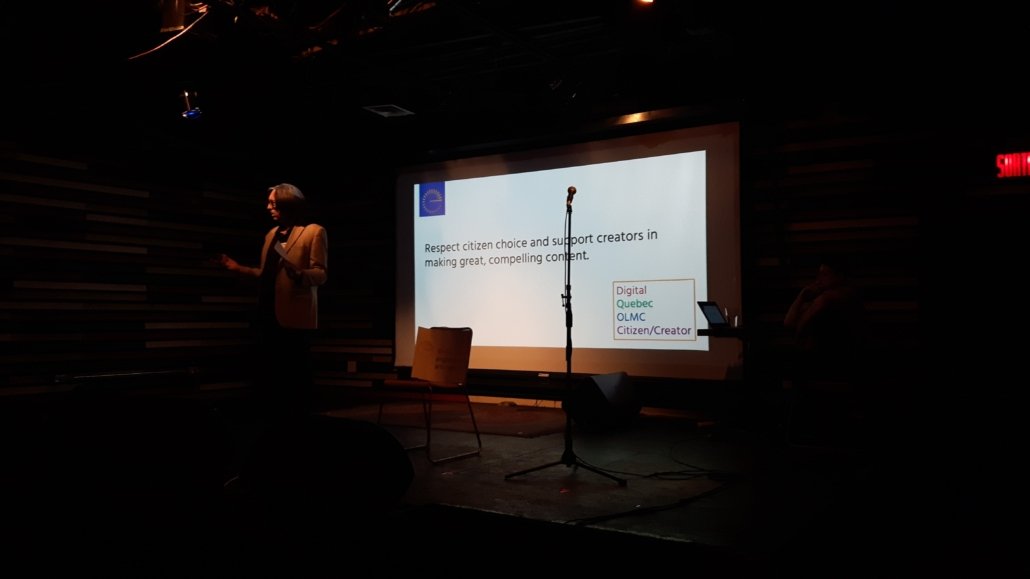
Guy Rodgers at Digital Shift public consultation at Bar Le Ritz.
Photo by: Amy Macdonald.
Market Access: Performing Arts, and Visual Arts #2
Following last year’s popular Visual Arts Market Access (VAMA) project, funding from the Canada Council for the Arts’ Market Access Program allowed ELAN to host a second edition of VAMA.
In 2016, ELAN brought four new gallerists and curators from New York City. They visited 13 studios in Montreal and devoted a day to visiting four studios in the Eastern Townships. Participating artists reported gaining a better sense of New York’s art world, increased confidence in their own work, and a useful understanding of their work within a broader artistic context.
ELAN also hosted a lively panel discussion, moderated by Hope Peterson, with the visiting curators and gallerists at the Phi Centre, followed by a Schmoozer. Canada Council covered travel costs for artists from the Eastern Townships to attend the panel discussion and Schmoozer. The panel featured gallerists and artists Lital Dotan and Eyal Perry of Glasshouse Art/Life/Lab, writer and curator Matthew Schum, and Amanda Hunt, who was Assistant Curator of The Studio Museum in Harlem at the time.
In 2016, ELAN conducted the Performing Arts Market Access Study, which included 110 in-depth interviews with performers, arts producers, managers, and agents in the fields of dance, theatre, and music. The study examined career goals and aspirations, barriers and opportunities, and gaps in professional knowledge in the performing arts.
Based on discussions conducted in study groups, the report identified examples of successful strategy to boost the profiles of emerging and mid-career artists. Called for more independently-curated artist showcases, like POP Montreal’s showcases at SXSW in Texas or The Great Escape festival in the UK. ELAN looked to local showcasing opportunities as an example, including CINARS, RIDEAU, Festival TransAmériques (FTA), and Tangente.
“It must be said however that since the creation of the English Language Arts Network (ELAN) in 2005, significant progress has been achieved in re-establishing community networks and a shared knowledge-base, particularly through its activities for Arts and Community Culture on the Road (ACCORD) and Arts Alive! Québec. Those projects sought to address specific challenges for English-speaking artists who want to tour provincially. These performers are not part of the francophone-driven star system in Quebec, and are often not invited to key provincial touring venues such as Les Maisons de la culture, which are more often located in predominantly French-speaking communities. Nor can they expect to be well-served by other established networks outside of Quebec, which invariably think of any Quebec artists as francophone.”
– A Market Access Strategy for Official Language Minority Community Artists in Quebec.
Visual Arts Market Access panel at Phi Centre. Left to right: Eyal Perry and Lital Dottan (Glasshouse Art/Life/Lab, Brooklyn), Mathew Schumm, and Amanda Hunt.
Photo by: Julia Stringhetta
Arts Alive! Québec #2
Arts Alive! Québec (AAQ) entered its second year in 2016, hiring Anne Clark as Project Manager and student Ben Compton came on board as Communications Coordinator for the summer. Funded by the Government of Canada through Canadian Heritage, AAQ 2016 followed a similar touring-circuit model to the previous year, while adding additional workshops for all ages.
AAQ revisited the regions outside of Montreal, building on the relationships forged in the project’s first year. Hudson kicked off the events by organized a weekend of activities from June 10-12 to promote the summer programming of their many arts organizations. Several workshops were offered throughout the summer and the Hudson Music Festival invited ELAN to co-produce a Schmoozer during their festival in August.
Quebec City held its Arts Alive! Québec weekend between July 1-3, and drew more than 1000 visitors for a diverse program of activities. Huntingdon held their event on August 6, with programming including music, dance, and poetry. Workshops ranged from improv-theatre and makeup, to sketching and ukulele building. Knowlton held their lively events on August 21-28. Wakefield’s edition occurred September 9-11, in partnership with the Ta Da! Festival.
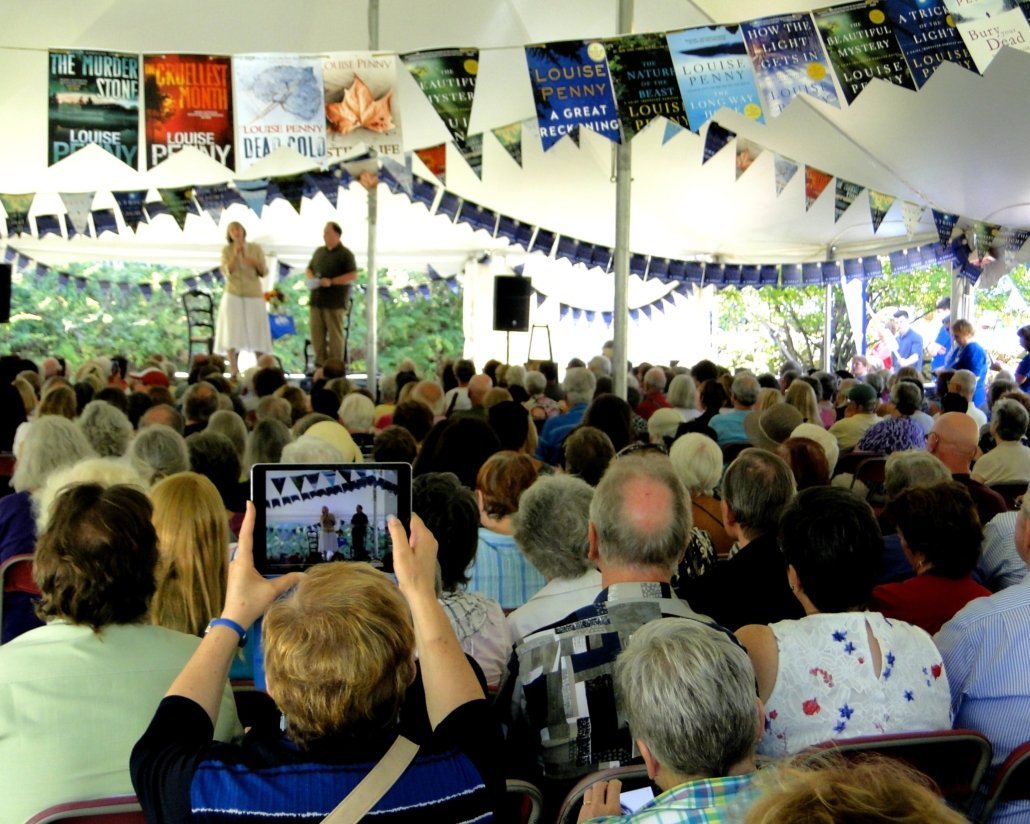
Launch of new Louise Penny novel, tent at Knowlton Arts Alive! Québec.
Photo by: Guy Rodgers
The biggest challenge for the 2016 edition of AAQ was the West Island. While ELAN partnered with John Abbott College for the 2015 edition, there was no alternative organization to act as a regional partner for the second year. ELAN worked with a team of local volunteers, and Deirdre Potash as Artistic Director, to help design, program and execute AAQ West Island at John Rennie High School on September 24 in Pointe Claire.
Arts, Communities, Education (ACE) Initiative
The Arts, Communities, Education (ACE) Initiative was born out of the successes of ELAN’s first foray, in 2013, into connecting arts and education through ArtWorks. ELAN and its partners in Quebec’s English-speaking community had long been aware of a gap in the availability of artistic and cultural experiences for youth in English-speaking Quebec. The problem is considerably more acute in communities outside Greater Montreal. The ACE Initiative proposed bringing together educators, artists and community organizers in Quebec’s English-speaking communities who work with youth.
The ACE Initiative invited artists and cultural community members to work together on a classroom activity, a lifelong learning program, or a special event. The ultimate goal of ACE was to provide tools that community partners can use long after the project ends to build unique projects to benefit their youth. Though ACE would go on to become one of ELAN’s most popular and long-running projects, it was a difficult project to fund because there was no existing envelope to link professional artists with education projects, as the Arts and Education disciplines are considered as separate silos. To make it happen, ELAN ended up cobbling together support from the Canadian Heritage Strategic Fund (80%) and the Quebec Regional Office (20%).
Through ACE, communities also had the chance to develop partnerships and strategies so that all generations of English-speaking Quebecers have access to arts and culture, particularly by overcoming obstacles specific to rural and remote communities. Since its inception in 2016, some of the ACE projects have included permanent murals and installations designed by students, intergenerational activities between elementary schools and their elders, and intercultural performances that educate young students about the Indigenous histories of their communities.

ACE planning session (Ace Jam) with 50 artist and educators from all regions of Quebec.
Project Manager Christie Huff.
Photo by: Julia Stringhetta
ACE Initiative in 4 Phases
- Phase 1: ACE JAM! On June 2, 2016, fifty people developed strategies and pilot projects to test a variety of approaches to encouraging collaboration between schools and communities, with the goal of increasing access to arts and culture.
- Phase 2: TEST! Four pilot projects tested different ways for schools to access artistic and cultural experiences. Successful applicants were supported in the project implementation process.
- Phase 3: SCALE! ELAN documented the pilot project phase and reported on factors that could enable or hinder larger-scale implementation of each project. All four pilot projects would become effective guides for other communities. User-friendly tools would be distributed to other communities in the years ahead.
- Phase 4: REINVEST! Work emerging from the ACE Initiative was analyzed and reported to stakeholders, with recommendations to extend the project benefits over the next five years.


